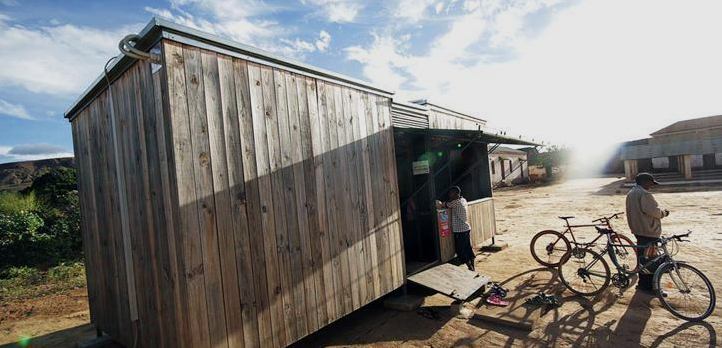Gen Z Wants Brands To Stop Talking About It and Be About It


Brands don’t get Gen Z, and it shows. That’s a big deal considering that the generation born after 1996 is expected to take over for millenials as the supposed killer of brands and industries. Now, anything that no longer serves their needs or values could be at risk.
Campaigns aimed at Gen Z appear to be missing the mark most when it comes to values. In a recent survey conducted by the Gen Z creative consultancy Adolescent Content, 75 percent of consumers in this age bracket want to leave the planet in a better state than how they got it. Naturally, they want the companies they give their hard-earned dollars to reflect this — just not in the same braggadocious manner that many brands use today. Unlike previous generations, Gen Z doesn’t want corporate America to talk about all the good it’s doing. They want corporate America to be about it.
Whether it is the environment or equity and inclusion, talk is cheap when it comes to Gen Z. They want to see action, and they don’t stop paying attention when the cameras quit rolling. An overwhelming majority — 82 percent of respondents to the Adolescent Content survey — will research a business before handing over any money. This is not surprising in light of the 78 percent who say they are suspicious of brand motivation and commitment to their ideals.
The fashion industry in particular stands to lose if marketers can’t turn things around and connect with younger buyers. The face of fashion itself is already changing thanks to Gen Z’s affinity for re-selling and buying used clothing. Add to that a very low tolerance for disappointing online shopping experiences that don’t live up to their standards, and brand loyalty could very well be facing a crisis.
In order for marketers to turn this trend around, they must see Gen Z as human beings with needs and values as opposed to just another brand in and of itself. One way to do this is by focusing on engagement. By providing spaces where brands can engage with their customers without actively trying to sell to them, they can demonstrate that their efforts go beyond pandering.
Engagement offers further opportunities for brands to show as opposed to tell — a strategy that Gen Z is telling us will work much better with them. Show them what matters to your brand. Listen to them instead of speaking at them. Demonstrate what your brand can do for them, humanity, and the planet — instead of simply telling them.
Gen Z doesn’t care about any meager funds thrown at environmental charities when a brand refuses to do anything about its own unsustainable practices. They aren’t impressed by token advertisements during Black History Month or Gay Pride followed by campaign donations to conservative politicians. They want to see brands give and do the right thing without expecting a financial return. Better yet, they want brands to do the right thing in silence, without seeking fanfare.
That is quite a standard for those that are used to consumers taking them at their word, barring any scandals or exposure that suggested otherwise. Gen Z is changing the rules of the game and expecting accountability upfront. With just a few clicks, they know if a brand is living up to their values — and that has a big impact on whether they will make a purchase or not.
Gen Z represents a formidable market share that will only increase in the coming years. Like millenials before them, this cohort of teens and young adults has the capacity to decide which brands will fade away and which will rise. Marketers who want their brands to survive and ride the wave of Gen Z purchasing power, as opposed to suffering the brunt of it, would be wise to pay attention and adjust their marketing accordingly.
Image credit: Adrienn/Pexels
8 Questions for International Women’s Day: Empowering Women Through Travel


Nikki Vargas, the founding editor of Unearth Women, a women's travel publication and co-author of the recently-published Wanderess, “a travel book dedicated to helping people travel smarter while showing them how to support and connect with women globally,” recently spoke with TriplePundit about the intersection between women, travel and sustainability. We also asked Vargas about Unearth Women’s popular feminist city guides.
TriplePundit: What is Unearth Women’s Mission, and what does International Women’s Day mean to you?
Nikki Vargas: The mission of Unearth Women is to celebrate the cultural, social, and political achievements of women, while showing travelers how to support women wherever they go. International Women’s Day is right in line with our goals as a publication to empower women. Plus, any day that asks the world to stop and appreciate the impact women have — and continue to have — on society is a day I fully support!
3p: When was Unearth Women founded and how has it grown since then?
Vargas: Unearth Women is a women's travel publication I founded back in 2018 alongside a team of women, including Wanderess co-author Elise Fitzsimmons and women's travel expert Kelly Lewis.
Initially, Unearth Women started as a print publication that we were able to scale from a self-sold magazine to an internationally-sold magazine in bookstores across the country. After a handful of issues, we pivoted to a digital-only publication where we continue to focus on telling women's stories and showing travelers how best to support women worldwide. Our latest endeavor is the release of our new women’s travel book, Wanderess, which was published this year by Penguin Random House.
3p: Why did you decide to create a publication tailored to women-specific travel?
Vargas: I had been working in the travel industry as a travel editor and noticed that the content in travel media seemed to always skew male-driven. Most publications I worked at were founded by men, most articles assigned to writers were being assigned by men and most travel stories were being written from a male perspective.
Of course, travel is not a one-size-fits all experience and the nuances of traveling as a woman, a person of color, LGBTQ+, or as someone with disabilities varies drastically from the experience of traveling as a straight white man.
I had always harbored this desire to create my own travel publication where I could combine my passion for travel with my love of spotlighting women’s stories. Unearth Women was the result of those combined passions and sought to fill a clear gap in the media landscape.
3p: What impact have you seen Unearth Women generate, and what feedback do readers give you on its unique focus?
Vargas: I have certainly seen a rise in traffic and readership that shows me that the content we are creating has found an audience. I think readers (and freelance writers) are happy to find a platform that champions women’s stories, focuses on women’s travel, and shares curated guides pointing travelers in the direction of women-owned businesses.
3p: In your opinion, what role do women around the world play in ensuring travel remains sustainable, both economically and environmentally?
Vargas: To me, traveling sustainably and responsibly means simply being mindful of my individual impact on the cultural, social, political, and environmental aspects of a destination.
How we choose to spend our money can mark the difference between stimulating the local economy and supporting female entrepreneurs or lining the pockets of big business. As travelers, we have a massive impact on the environment and a responsibility to reduce our carbon footprint.
Thankfully, the industry is responding in kind with ways to minimize carbon emissions with calculators to offset flight carbon emissions and a rise of travel that doesn’t involve flying.
3p: Why did you find it important to launch the feminist city guides?
Vargas: Our Feminist City Guides point travelers in the direction of women- and BIPOC-owned businesses worldwide. These guides are, by far, our most popular content and do a great job of offering travelers an alternative guide to cities they know and love.
Whether you’re visiting New York or solo traveling in Buenos Aires, our guides show you hotels, stores and restaurants that are women-owned, as well as speak to the historical impact of women in those locations.
3p: What are the most compelling examples you’ve seen of women feeling empowered by travel and tourism?
Vargas: I think the rise of women-led trips and women-only tours, such as those offered by Intrepid Travel, are really awesome to see. These trips not only connect women to other female travelers, but they are creating job opportunities for female tour guides in countries — like Iran — where it is largely a male-dominated space.
3p: In your experience, what is the most effective way to support women-owned businesses?
Vargas: Simply put, if you want to support women, shop women-owned.
Image credit: Shai Pal via Unsplash
Elon Musk, Brand Reputation and the Difference Between Goodwill and a Publicity Stunt


Scores of leading global businesses have publicly unified in a history-making effort to provide aid to Ukraine and exert economic pressure on Russia. In almost every case, the reputational impact is clear, uncluttered and laudable. The exceptions, few as they are, illustrate how good intentions can easily backfire, with potentially tragic consequences. Corporate leaders need to think before they act in a time of crisis, as millions of lives are at stake.
Grabbing the spotlight in times of crisis
From BP and Shell to Visa and Mastercard, scores of leading corporations have publicly dropped ties with Russia. Innumerable others have offered cash donations, supplies and other forms of aid. The effort has united the global business community as never before.
In most instances, publicity for the actions has been swift and concise, consisting mainly of a press release concurrent with social media announcements. That makes it difficult to stand out in a crowd. However, any high-profile CEO with a knack for social can easily find a way to rise above the herd.
True to form, Elon Musk has done just that. Whenever there is a crisis, there is sure to be a series of tweets from the Tesla and SpaceX CEO, sometimes insulting, sometimes grandstanding, and always guaranteeing free publicity. All three have been on display as Russia continues its homicidal rampage through Ukraine.
Elon Musk is not the only high-profile CEO on the planet. However, his near-rockstar status and his 76 million Twitter followers provide him with a uniquely powerful amplifier.
How the COVID-19 crisis set the stage
Musk’s ability to fire off attention-grabbing tweets and other communications during times of crisis was on full display in the spring of 2020, as the COVID-19 pandemic first unfolded in March.
GM and other automakers responded to the crisis by converting their operations to manufacture ventilators and other supplies. Elon Musk publicly promised to donate ventilators directly to hospitals. His ventilators never materialized, though other, less expensive devices did.
Later that spring, Telsa ostensibly joined with GM, Ford and other manufacturing leaders to collaborate with the White House on a plan for restarting operations that had been suspended during coronavirus lockdown. The coordinated effort was supposed to showcase the ability of U.S. manufacturers to work together, create safe workplaces, and rebound from the global crisis.
A joint restart date was set for May 18. However, in the weeks leading up to the big event, Elon Musk launched a series of public attacks on the lockdown, garnering reams of free publicity along the way. Ultimately he recalled his employees to work days before the agreed-upon restart date, with the gleeful support of former President Donald Trump himself.
The NATO factor
Though Musk has insisted that he eschews politics, he also regularly deployed his Twitter account in the service of former President Trump’s misdirection on COVID-19.
From the earliest days of the pandemic, Trump persistently undermined expert efforts to advise the public on COVID-19 safety. Musk also minimized the danger in a series of tweets through the 2020 election cycle. To the extent Trump’s re-election strategy depended on downplaying the pandemic, Elon Musk played a role in that effort.
Musk continued to undermine a science-based response to the crisis after President Joe Biden took office in January 2021, by questioning vaccine safety on Twitter. Over the summer of 2021, Musk also began to lash out at President Biden on a more personal level after the Biden administration left Tesla out of a White House event showcasing other U.S. automakers.
The criticism carried over into January of this year, even as the Biden administration continued working to repair the damage done to NATO by Trump and his allies, while Russia intensified its military buildup around Ukraine.
Whether through ignorance or intent, Musk’s Twitter account was an echo of Trump’s NATO-weakening efforts. Both Canada and the U.S. are founding members of NATO, yet Musk publicly cheered the "trucker" convoy in Canada from the beginning and targeted Canadian President Justin Trudeau for criticism, even though the drivers virtually paralyzed the capital of Canada for weeks and blocked key crossings between Canada and the U.S.
At the end of January, Musk also lobbed another personal insult at President Biden, apparently miffed at another perceived White House snub.
For Elon Musk, a good publicity stunt gone bad
Having publicly insulted two NATO leaders and encouraged hundreds of ordinary citizens to disrupt Canadian-U.S. commerce as Europe hovered on the brink of war, Elon Musk finally went into damage control mode after Russia pulled the trigger and invaded Ukraine. He publicly announced that he would enable Ukrainian forces to communicate through his Starlink satellite internet service, and would donate the necessary equipment.
The donation was apparently a direct response to a series of public pleas from Ukraine’s vice prime minister, Mykhailo Fedorov, who asked a number of other tech companies to send aid as well.
As it turns out, the usefulness of the Starlink equipment is in serious doubt. Shortly shortly after Musk announced the donation, a security expert at the University of Toronto, John Scott-Railton, tweeted out a warning of the potential danger to Starlink users in Ukraine.
Reporter Jackie Wattles of CNN Business also interviewed University of California security researcher Nicholas Weaver last week, who noted a similar danger. "Starlink may work for the moment, but anyone setting a [Starlink] dish up in Ukraine needs to consider it as a potential giant target," he warned.
When Wattles spoke with Scott-Railton, he advised that Starlink is a new technology that has never been vetted for safety in conflict zones “Using satellite technology in conflict zones has — time and again — been an underestimated risk,” he warned.
Wattles also noted that Musk publicly admitted Starlink could put its users at risk. “Shortly after this story was originally published, Musk also weighed in on Twitter, saying ‘Important warning: Starlink is the only non-Russian communications system still working in some parts of Ukraine, so probability of being targeted is high. Please use with caution,’” she reported.
Vox reporter Sara Morrison also observed that the equipment donated to Ukraine is an older iteration of the technology that was used during a yearlong beta test. Either the company did not have a supply of new equipment at hand to donate, or Ukraine provided a convenient way to get free publicity while clearing old stock off the shelves.
As of last Friday, there was no clarity on what use, if any, Ukraine would be able to make of Starlink during the conflict.
Damage control
Unless something changes, the Starlink donation will join Musk’s list of publicity-friendly promises that fall short in a time of crisis. That includes the unusable mini-submarine Musk offered for a cave rescue plan in 2018, as well as the supposed ventilator donation in 2020.
The time for publicity stunts is long past. Musk was certainly not the only entrepreneur to tolerate Trump’s anti-NATO activities, but he was among the few to deploy Twitter to support Trump’s COVID-19 misdirection during the 2020 election cycle.
Tacit or not, the support of Musk and other business leaders for the Trump presidency casts a giant shadow now that Russia has invaded Ukraine. As president, Trump made no secret of his disdain for NATO, and in 2018 he admitted threatening to pull the U.S. out of the longstanding alliance.
Against that backdrop, Russia’s unprovoked strike against Ukraine has come into focus as a plan contingent on a weakened NATO — fractured and incapable of lending any meaningful aid to Ukraine, enabling Russia forces to overrun the country within a day, claim its resources, and gain an outpost from which to threaten the rest of the continent.
Russia went through with the plan even after Trump lost his bid for re-election, apparently on the assumption that President Biden would not be able to re-establish NATO as a counterbalance.
Russia made a bad miscalculation, as proved by the courage of the people of Ukraine, the resolve of NATO and the international community, and the support of other business leaders who have voluntarily exercised their own economic pressure on the Russian government. If Elon Musk really wants to help, he can stop tweeting and starting lending a hand.
Image credit: Steve Jurvetson/Flickr
Microlending: An Unsung Solution to Boost Engagement in Remote Workplaces?


Lenders on the Kiva platform have funded over $1.6 billion in loans to small business owners and other underbanked borrowers around the world since 2005.
Employee interaction and engagement can be difficult enough when everyone works in the same building. Factor in the shift to remote work and the challenges of the past two years, and it can feel like connecting with colleagues is a thing of the past — leaving many business leaders looking for new ways to bring everyone together.
BMC Software, for example, launched a set of Employee Resource Groups (ERGs) in 2021 to empower, celebrate, support and advocate for employees, their unique cultures, and their communities. Members of each ERG are united by shared experiences or interests, including: Abilities, Asian & Pacific Islander, Black @ BMC, Caregivers, Interfaith, LatinE, One Earth, Pride, Veterans, and Women in Technology and Business.
When BMC Software’s corporate social responsibility team, led by Wendy Rentschler, created the ERGs, they knew they needed to develop tangible ways for group members to get involved and make meaningful change in their areas of interest. This was especially challenging as volunteer projects were still highly segmented and hard to come by due to the pandemic. Instead, BMC Software’s corporate social responsibility (CSR) team provided each of the 10 groups funds to invest with Kiva, an online platform that has funded over $1.7 billion in microloans to underbanked borrowers across 76 countries since 2005.
“One of the best ways to create equity is through economic empowerment, and each of our ERGs participates in microlending through Kiva,” Rentschler explained on BMC Software’s “Business of IT" blog.
Building equity through economic empowerment
For those who may be unfamiliar, Kiva is a nonprofit that creates economic opportunities for individuals, entrepreneurs, and small business owners around the world through microlending.
Borrowers can apply to Kiva for a loan to start a business, continue education, upgrade farming or manufacturing equipment, cover emergency expenses and more. Investors — individual lenders or groups such as BMC Software’s ERGs — can search for and contribute to loans they’d like to help fund, based on factors like geographic location or type of business. Once loans are funded, more than 96 percent of Kiva borrowers ultimately repay lenders— allowing users to reinvest those funds into another loan on the platform, furthering the monetary impact and expanding financial inclusion.
As BMC Software’s ERG meetings are held remotely, all employees have the ability to participate and help decide which Kiva initiatives to invest in based on how the opportunities relate to their shared backgrounds. The LatinE ERG, for example, has funded loans in 10 countries in Central and South America, while the Pride ERG has invested in LGBTQIA+ initiatives.

Tackling sustainability challenges
Mark McDermott is director of global real estate and facilities at BMC Software’s Houston-based headquarters. He started microlending with Kiva in 2009 through his previous employer. Five years later, he began volunteering to proofread loan profiles as a Kiva editor. This experience gave McDermott a “behind-the-scenes” glimpse of how loans went from application to funding to repayment, a perspective that helps him today as co-captain of BMC’s One Earth ERG.
One Earth is the company’s largest ERG, centering on sustainability and environmental issues. While each ERG has a slightly different process of choosing which Kiva loans to fund, One Earth tends to focus on one environmental challenge at a time and select loans that best address it, McDermott said.
For example, fast fashion is a big area of discussion and concern for One Earth members, so for a time the team focused on backing businesses that resell or recycle secondhand clothing. Other recent One Earth loans went toward projects involving sanitation and renewable energy — including Heri-Go, which provides home solar systems through a network of energy kiosks managed by women entrepreneurs in rural Madagascar (pictured above).
“The loan we helped fund provided solar energy systems for more than 1,000 homes,” McDermott told us. “Its aim fits perfectly with what our Employee Resource Group stands for: The project was managed by women entrepreneurs, provided clean energy, was located in Madagascar, and touches upon many of the interests of BMC’s various ERGs.”
Microlending as an incentive
Christina Chao, Kiva’s senior director of strategic partnerships, works with companies of all sizes to help implement microlending engagement initiatives. “You can participate with five employees or with 50,000 employees,” she told us. “Companies can use microloans in conjunction with employee resource groups, as in the case of BMC Software, or they can be part of a company-wide strategy. In fact, we even see friendly rivalries develop among different office locations or departments within a company, or even between companies.”
Unlike traditional corporate giving programs, companies aren’t just making donations with Kiva — they’re also making investments — and employees aren’t the only ones benefiting. Chao said she’s seen many organizations engage customers by giving Kiva credit as an incentive. “Not only does this help borrowers whose loans can be funded by the credits, but it also helps the companies strengthen their corporate responsibility and sustainability initiatives.”
She went on to share an experience of meeting a borrower, Vicky, in Uganda who wanted to start a vegetable farm to send her children to school and lit up with confidence when Chao showed her the list of lenders from around the world who had signed up to support her. For McDermott, it isn’t only the support borrowers gain from investors that has had the most meaning for him over the past year, but also the support employees find in each other by coming together around a shared cause.
“The One Earth ERG has definitely helped strengthen the connections among business units,” McDermott said. “Together, you feel like you have a bigger impact than just punching a clock. You are making a real difference.”
This article series is sponsored by BMC Software and produced by the TriplePundit editorial team.
Images courtesy of Kiva
Sustainably Sourced Beer is No Longer Just for the Craft Market


It was not long ago that procuring sustainably sourced beer required a jaunt down to the local microbrewery, often with a hefty price tag to go along with it. These days, larger macro brewers are stepping into line with consumer demand by placing a greater emphasis on improving their carbon footprints. As customers and businesses become increasingly aware of the need for proactive changes, ethically crafted libations will increasingly take up spots on the shelf.
Alcohol behemoth Diageo is one of many such companies working to improve its regenerative agriculture practices with the aim of improving soil health, protecting natural resources and sequestering carbon.
Diageo's recently announced pilot program for Guinness is part of a larger 10-year sustainability action plan targeting net-zero carbon emissions across all direct operations, along with a 50 percent reduction in value chain emissions, by 2030. The new pilot program will take place in Ireland and will last three years.
During the first phase, which will occur in the spring and winter barley sowing of 2022, Guinness will work with a minimum of 40 farmers to improve the sustainability metrics of their barley production. As the pilot develops, the number of participating farmers will continue to increase. The pilot is expected to boast several benefits, including improvements to soil health, enhanced biodiversity, reductions in synthetic fertilizer use, enhancements to water quality, and improvements to farmer livelihoods.
"The great thing about regenerative agriculture is the simplicity of the approach," Walter Furlong Jr., one of the farmers involved in the pilot, said in a statement. "It's not a complicated process — it works in harmony with nature whilst providing a commercial benefit for farmers. We already use regenerative agricultural practices and have seen a marked improvement in the quality of the soil on our farm. It is a highly effective approach that leads to much better outcomes."
The company says it will openly share the results of the new venture, providing valuable insight to other farmers and industry professionals. At a time here on Earth when, for the climate's sake, we cannot afford to covet this type of information, it is imperative that cooperative efforts such as this continue to play out within the food and beverage sector as a whole.
How will the broader consumer base respond to sustainably sourced beer from macro labels?
Well, as Food Dive reported, the stance is mixed. One 2021 survey of 1,000 U.S. adults, conducted by the International Food Council, found that 36 percent of respondents viewed foods derived from regenerative agricultural practices as the healthier choice. However, those same participants said they'd be unwilling to pay more for those products.
Research into sustainably sourced beer in particular is more promising. In a 2018 survey of 1,094 U.S. adults, 59 percent of respondents said they'd pay more for beer labels that invest in sustainable practices. Although it is worth noting that those respondents had self identified as beer drinkers, meaning they're already more inclined to spend up on the suds.
With that information in mind, the expansion of sustainably sourced beer and alcohol beyond the craft market, through initiatives like Diageo's new pilot program, could be key to improving accessibility in demographics where people want to support sustainable practices but cannot justify the higher costs that are typically associated with such products. While the price of a sustainably sourced pint of Guinness may end up costing more, it will likely still be cheaper than many of the ethically produced stouts produced for the craft beer market.
As larger food and beverage companies continue to align their ingredient sourcing with the U.N. Sustainable Development Goals and other global agendas, we get closer to living in a world where sustainable products are no longer associated with pretension and, in turn, continue along the path of becoming the norm.
Image credit: Rob Nohava/Unsplash
The Top Water Takeaways From the IPCC Report


Climate and water are inextricably linked. Yet conversations and reporting about the new Intergovernmental Panel on Climate Change (IPCC) Sixth Assessment Report: Impacts, Adaptation and Vulnerability tend to hide it in the findings. A closer look at the IPCC report shows that water touches every component of climate impacts, from agriculture to mental health, infectious diseases to infrastructure.
The impact climate change is already having on water is significant and, unsurprisingly, falls disproportionately on low-income and marginalized communities. But data is also inconsistent and inadequate for many sectors and regions. Unfortunately, this is not a new problem, but in order to best understand the impacts and prepare adaptive and resilient responses, it is one that has to be addressed.
Over half of all disasters since the 1970s involved water, according to the IPCC report. And that's not all.
The IPCC report defines "disasters" as extreme weather events coupled with high vulnerability and exposure to communities. Over half of these events since the 1970s involved water, with an estimated 44 percent being flood-related and a further 7 percent drought-related, according to the report. Drought disasters alone accounted for 34 percent of all disaster-related deaths over that time period, especially in Africa.
Further, nearly half a billion people live in “unfamiliarly wet areas,” while 163 million live in “unfamiliarly dry areas.” Many of the areas now facing increasingly hot and dry temperatures, which also accelerates evaporation, are also seeing lower levels of groundwater.
These changes affect global patterns of soil moisture, which has consequences for agriculture, ecosystems, and the ability to literally weather extreme storms. The implication is that systems — both natural and manmade — are ill-equipped to handle the changes already underway due to climate change. The 270 authors authors of the IPCC report note that these changes “disproportionately impact vulnerable populations such as the poor, women, children, Indigenous peoples and the elderly in all locations."
The impacts to agriculture are particularly stark: Between 1983 and 2009, approximately three-quarters of the global harvested area saw yield losses because of drought, costing the world an estimated $166 billion.
Cities are also on the frontlines. Urban expansion and shifting rainfall patterns could cause about 30 percent of all major cities globally to run out of water by 2050. Increasingly intense and shortened flood and drought cycles also increase wear and tear on already-stressed water infrastructure. Coastal cities, in particular will see the impacts on their infrastructure. The report estimates between $7 trillion and $14 trillion worth of coastal infrastructure assets will be exposed by the end of the century, which will affect not just water infrastructure, but also power production and housing.
Adaptation requires better data
Many impacts have adaptive solutions, but they will require significant — and often targeted — investments, such as technical assistance and access to equipment for drought-resistance crops and irrigation. The provisions in the U.S. infrastructure law that passed last fall are only a drop in the bucket of what is needed, but a good first start. In addition to shoring up pipes and dams, investment in technologies like smart water systems, water recycling, and energy-water nexus solutions, including floatovoltaics and energy-efficient and renewable-energy powered desalination, will be required.
But targeted adaptation will also require good data to know how to prioritize investment. While the IPCC report has robust data on impacts like soil moisture levels, several of the impact areas have low- to medium-level confidence or lack sufficient data. This is particularly noticeable in water impacts for coastal cities. Considering how vulnerable these communities are to extreme weather events, the lack of sufficient data is notable. Further, virtually every region, including North America, has only medium confidence in the attribution of climate change to impacts.
The time to act is now
The water sector is notoriously localized, but local effects can spillover into regional or national impacts. Strengthening the available data within and between water basins would help planners determine how best to spend investment dollars, both to minimize risk and protect the most vulnerable populations and systems.
The key takeaway from the most recent IPCC report is that we have a “rapidly closing window” to act. Many communities are already dealing with climate-related impacts, often further hindered by crumbling infrastructure and multi-tiered regulation that makes better data collection and dissemination challenging. It is, however, not an insurmountable problem. More climate tech companies have begun to develop technical solutions to address the water impacts of climate change.
Water is humanity’s most basic necessity. When there is too much or not enough or access is unreliable and unpredictable, it can fire up a panic response. The interconnectedness of water requires precision. To address the impacts laid out in the IPCC report, better data must be a priority.
Image credit: Fabio Santaniello Bruun and Nathan Dumlao via Unsplash
Corporate ESG Storytelling Largely Focused on the 'E' During 2021


According to a recent study of ESG communications from 3BL Media, companies were far more communicative on environmental topics in 2021, ahead of stories related to philanthropy and DEI (diversity, equity and inclusion).
Of the more than 8,000 reports and stories on ESG (environmental, social and governance) topics that 3BL Media distributed last year, environmental topics generated the most volume and audience interest, with such engagement rising 68 percent over 2020.
As the public awaits what becomes of the U.S. Securities and Exchange Commission’s proposed rule on mandatory climate disclosure for publicly traded companies, there has been a sharp increase in the number of reports, articles, videos, press releases and other content discussing action companies have taken on carbon emissions, water, waste and the environment.
In the wake of the climate-related disasters that made headlines last year, the news surrounding the most recent IPCC report and the run-up to the COP26 talks in Glasgow, it is clear that stakeholders — especially investors — are demanding ESG performance and transparency. As a result, 3BL Media’s data is witnessing more companies move beyond annual sustainability reporting to more frequent communications.
The second most viewed category at 3BL Media in 2021, philanthropy and cause initiatives, declined 29 percent in audience engagement from its 2020 spike when both B2B and B2C brands were pledging their support in the ongoing battle against the COVID-19 pandemic.
Corporate content on the topics related to DEI generated the third highest volume in 2021, with engagement rising 35 percent from 2020. This category grew in 2020 amidst the nationwide racial justice protests, and as companies continued to communicate about DEI in 2021, the results showed that readers found related announcements and stories even more relevant.
In addition, 3BL Media found a 13 percent increase in readership for reports, a category that encompasses all forms of corporate responsibility, sustainability, ESG or integrated reports. Announcements about awards, ratings and rankings were up 9 percent.
While the number of corporate stories about volunteering and community involvement declined due to COVID-19 limitations, engagement was up 8 percent.
3BL Media’s data analysis included 8,200 media releases from corporate and nonprofit clients that subscribed to the 3BL Professional ESG content distribution and analysis platform in 2021.
Image credit: Margot Richard via Unsplash
This Countertop Appliance Helps Consumers Nix Single-Use Plastics


Self-described sustainability geek Nick Gumia decided to take on one of the world’s biggest pollutants, single-use plastics.
He attended a conference on sustainable packaging seven years ago and learned about reusable containers. Gumia owned a business that sold cleaning concentrates, among other products, so he decided to develop a system for people to create a variety of cleaners in their own homes using concentrates and then store them in reusable containers.
The product line Gumia created, Cleanyst, allows consumers to produce 10 different home and personal cleaning products. He even took it a step further, by developing plant-based ingredients. Users combine water and concentrate in a mixer to create the cleaning product of their choice. Besides using renewable ingredients, Gumia’s goals were to reduce waste from single-use plastics and minimize carbon emissions.
“We wanted to develop a system that could unlock the full potential for concentrates,” Gumia said. His family owns a distribution business that supplies packaging, raw materials and chemicals to manufacturers. “We’ve sold concentrates for dishwashers or surface cleaners, so I knew concentrates very well.”
Creating organic concentrates that were effective and sustainable required a substantial amount of research and development. “That was a challenge,” according to Gumia. “We had to get comfortable with plant-based formulas. I wanted to focus on the greenest chemistry I could.” The company also has done clinical testing on all its products that come into contact with skin.
The only waste in the Cleanyst process is the pouch containing the concentrates, made from 6.5 grams of bio-based plastic derived from sugar cane. “We pay to take back and recycle the pouches,” said Gumia. “If a customer participates, we close the loop on plastic waste.” Cleanyst sells the pouches to TerraCycle, a recycling company. “It’s likely we’ll be doing some other type of recycling based on conversations with TerraCycle,” Gumia added.
Cleanyst’s plastic containers are designed to last three years, although that is only an estimate, according to Gumia. “Some have a pump or sprayer, and those are components that need to be replaced sooner.”
Any effort to reduce the deluge of single-use plastics that are polluting oceans and piling up in landfills is critical. Nearly 300 million tons of plastic waste are generated yearly, and the amount is increasing by 9 percent annually. About half of all plastics produced each year are for single-use.
Cleanyst is looking to up its sustainability game by developing concentrate pouches that can be easily recycled. “One of the aspects we’ve always not been thrilled about is that our pouches can’t be recycled curbside,” Gumia noted. “We’ve been looking at different ways to achieve that. If we had a dry product, it would be easier to design a compostable pouch.” The company also is looking at ways to streamline the mixing machine to ensure it has the smallest environmental footprint.
Most of Cleanyst’s customers so far have been individuals, many in the 25 to 45 age range, he said. “These are consumers who care about the chemicals they use to take care of their bodies and homes and their plastic footprint.” The company is trying to expand to other demographics, as well as businesses, such as salons, cleaning services and vacation properties.
One way to do that is through personalizing products. Cleanyst offers botanical oils and eight different extracts, so users can make custom scents, adding to the fact that they are doing their part to reduce their consumption of single-use plastics.
“We are very keen on releasing more high-end products,” said Gumia. “The more products we have, the more we can justify having a product in your home. “We have to take it one product at a time; we have to balance all the different products out there.”
Image credit: Cleanyst
U.S. Business Leaders Throw a Lifeline to EPA on Climate Action


The U.S. Supreme Court seems on course to stop the Environmental Protection Agency (EPA) from regulating greenhouse gas emissions, but that is not the end of the U.S. climate action story. Regardless of what the Court decides, the Department of Energy has just announced a new public-private initiative that sets a high bar for rapid decarbonization.
The U.S. is decarbonizing without the Clean Power Plan
As capably summarized by National Public Radio earlier this week, the Supreme Court is now hearing a case brought by coal stakeholders and 17 state attorneys general. The case has roots in the 2015 Clean Power Plan, a carbon-reducing initiative introduced during the Barack Obama administration.
The Clean Power Plan is an EPA rule that sets carbon limits on a state-by-state basis, rather than targeting individual power plants. The intent was to provide each state with the flexibility to decarbonize its power generation sector in accordance with its own unique needs and resources.
The Clean Power Plan never went into effect. Fossil energy stakeholders and their allies immediately, and successfully, challenged it in court in West Virginia vs. the Environmental Protection Agency.
Nevertheless, utilities and policymakers in many states proceeded with their decarbonization plans, under the assumption that the decision would eventually come down in the EPA’s favor.
The case for decarbonization among corporate energy consumers also continued to drive the clean power market throughout Obama’s term in office. Former President Donald Trump tried to pull the plug on climate action when he took office, but the bottom-line case continued to win out. The Renewable Energy Buyers Alliance is just one example of the ability of energy consumers to shift the electricity market in a low-carbon direction, even without the benefit of federal regulation.
U.S. Supreme Court flexes its conservative muscles against the EPA
When President Joe Biden took office in 2021, the Clean Power Plan was still winding its way through the courts, and the Supreme Court’s 6-3 conservative majority seemed likely to decide against the EPA. With the end in sight, the Biden administration revoked the Clean Power Plan altogether and prepared to start over with a clean slate.
U.S. businesses flex right back
Despite that maneuver, last year the Supreme Court agreed to take the case. The Court heard oral arguments on Monday, and a decision is expected over the summer.
Regardless of the decision, the Biden administration has already taken steps to empower corporate leaders to ramp up their decarbonization efforts.
On Monday, the U.S. Department of Energy announced the new “Better Climate Challenge,” which aims to coordinate and maximize the carbon-reducing efforts of more than 90 leading businesses, academic institutions, local governments and other civic entities.
Among the high-profile corporate energy consumers and stakeholders are 3M, Cummins, Honeywell, Ikea, Kohl’s, Nestlé, Stanley Black & Decker, Whirlpool, Xerox, and many others. Auto manufacturers are also represented by Ford, General Motors, Harley, Nissan, Toyota and Volvo.
Participants in the Better Climate Challenge commit to lead by example, pledging to cut their carbon emissions by 50 percent by 2030. Though many of the participants have already made extensive cuts, the new initiative challenges them to meet their pledge without the use of carbon offsets.
As a lead-by-example initiative, the Better Climate Challenge has also enlisted several public housing and multifamily partners. Buildings that fall under these two categories are perceived to be difficult to decarbonize due to income or ownership factors, or both. However, the Energy Department and its partners have already made considerable progress, and the Better Climate Challenge provides a high-profile platform for sharing best practices with other stakeholders.
All hands on deck for climate action, Supreme Court or not
The Better Climate Challenge will also tap into a network of more than 950 DOE partners that have been sharing best practices for decarbonization through the agency’s Better Buildings Initiative.
In addition to DOE-led programs, the nation’s sprawling network of rural electric cooperatives has also become a potent force for widespread decarbonization, under the umbrella of the National Rural Electric Cooperative Association. Earlier this month, for example, NRECA encouraged its members to contact transportation agencies in their home states and collaborate on the Biden administration’s five-year, $5 billion plan to establish electric vehicle charging station networks across the country.
The organization is currently lobbying Congress for new regulations that would level the financial playing field for nonprofits and provide a more equitable platform for clean power and other clean technologies.
“As electric co-ops work to reliably meet future energy needs at a cost that consumers can afford, they must have equal access to energy incentives and programs,” NRECA CEO Jim Matheson said in a statement last November.
A wakeup call for corporate citizens
As for the fate of the Clean Power Plan, the Supreme Court’s decision to hear the case may seem pointless. However, Supreme Court observers have argued that the unusual decision is a thinly disguised muscle-flexing exercise rooted in the mindset of the conservative justices who dominate the bench, including the husband of a high-profile conservative lobbyist.
A ruling against the EPA's Clean Power Pan could ripple out to cripple the ability of all federal agencies to administer laws passed by Congress, including the U.S. Departments of Defense and Homeland Security.
It's too late for the fossil energy stakeholders behind West Virginia vs. EPA to rethink their position, but at a time when Europe hovers on the brink of another war, it’s not too late for other corporate leaders to rethink their support for conservative priorities.
Image credit: Alex Simpson/Unsplash
With Global Plastic Treaty Talks Underway, Support Behind Single-Use Plastics Ban Grows


An IPSOS poll of more than 20,000 people across 28 countries has found that 75 percent of people worldwide want to ban single-use plastics. The survey comes just as United Nations member states are meeting in Nairobi, Kenya, to discuss a potential global treaty to address plastic pollution.
Given the poll’s encouraging data, it will be important for a treaty to prioritize growing consumer anxiety around the environmental harms of plastic over opposition from oil and gas companies and large global plastics producers.
A global plastics treaty vs. plastics producers
Any deal to come out of the United Nations talks has the potential to build upon the 2015 Paris Agreement on climate change, which was adopted by 196 parties to the U.N. The vast majority (88 percent) of global adult respondents to the IPSOS survey believe it is essential, very important or fairly important to have an international treaty to combat plastic pollution.
Currently, more than 50 countries — including all 27 members of the European Union — want the potential pact to include preventative measures targeting plastic production itself, rather than reactive measures like waste collection and recycling, which won’t target the source of our growing waste footprint.
Representatives of multinational companies like ExxonMobil, Royal Dutch Shell and Dow have publicly expressed support for the treaty, which can take at least two years to finalize. However, the powerful American Chemistry Council (ACC), a group of U.S.-based oil and chemical firms, is being accused of leading a behind-the-scenes effort to shift the conversation away from plastics reduction.
In this vein, the IPSOS poll also revealed the high percentage of worldwide respondents who want manufacturers and retailers to be responsible for reducing, reusing and recycling plastic packaging (85 percent in 2022, compared to 80 percent in 2019). Though companies are starting to integrate more recycled content in their packaging, multinationals like PepsiCo, Nestlé, Unilever and Coca-Cola are still fueling high demand for virgin plastic production.
Developing nations tend to bear the highest burden when it comes to waste management, a situation Greenpeace has called "waste colonialism." Out of the 28 countries surveyed, the poll showed the highest support for a single-use plastics ban in Colombia, Mexico and India.
Consumer attitudes toward convenience
So, what about the argument that consumers aren’t ready to part with the convenience of plastic?
Though consumer support for plastic reduction has grown worldwide since the last IPSOS survey, these numbers remain lower in the U.S. compared to the global average. Averaging out responses from the other 27 countries in the survey, 75 percent of people said they want to ban single-use plastics, and 85 percent favor products with less plastic packaging. Only 55 percent and 71 percent of Americans, respectively, said the same. (Only Japanese respondents reported lower numbers, with 37 percent wanting a ban and 56 percent preferring less packaging.)
Though we need powerful stakeholders like governments and companies to lead the way, consumers have an important role to play, too. The fact that some Americans get angry when their preferred plastic bags are not available at the store is a result of a convenience culture that has only expanded since the 1950s post-war consumerism boom. It’s clear that public opinion is shifting for good, but where it lags, it may be possible to leverage consumers’ reliance on convenience to encourage more sustainable choices — and support business.
GreenPrint’s 2021 Business of Sustainability Index found that 75 percent of millennials, 63 percent of Gen Z, 64 percent of Gen X and 57 percent of baby boomers are willing to pay more for a product they know is more environmentally sustainable. Though more transparent educational initiatives are necessary to help them identify these products, more consumers are choosing plant-based meat and milk alternatives, as well as products in bio-based plastic, as they become available. The restaurant industry has begun reducing its carbon footprint while meeting consumers where they’re at with bamboo and other bio-based products.
The journey doesn’t end with single-use plastics
Single-use plastics run the gamut: plastic bags and bottles, straws, clamshell containers, cutlery and various forms of consumer packaging. While their proposed elimination is a great first step, we must also raise awareness about the problems less visible forms of plastic cause for our ecosystem: for example, plastic micro-particles from clothing and other fabric that wash into our oceans, composite packaging (that combines paper and plastic, for example), and the world's most-littered item, cigarette butts.
Individuals can do their part, starting with sending a message to the Biden administration to support a global treaty to reduce plastic pollution through Greenpeace. Beyond the United Nations talks, advocating for plastic reduction in the larger supply chain can help us gradually work toward a more sustainable, circular economy that suits everyone worldwide.
Image credit: Mali Maeder via Pexels